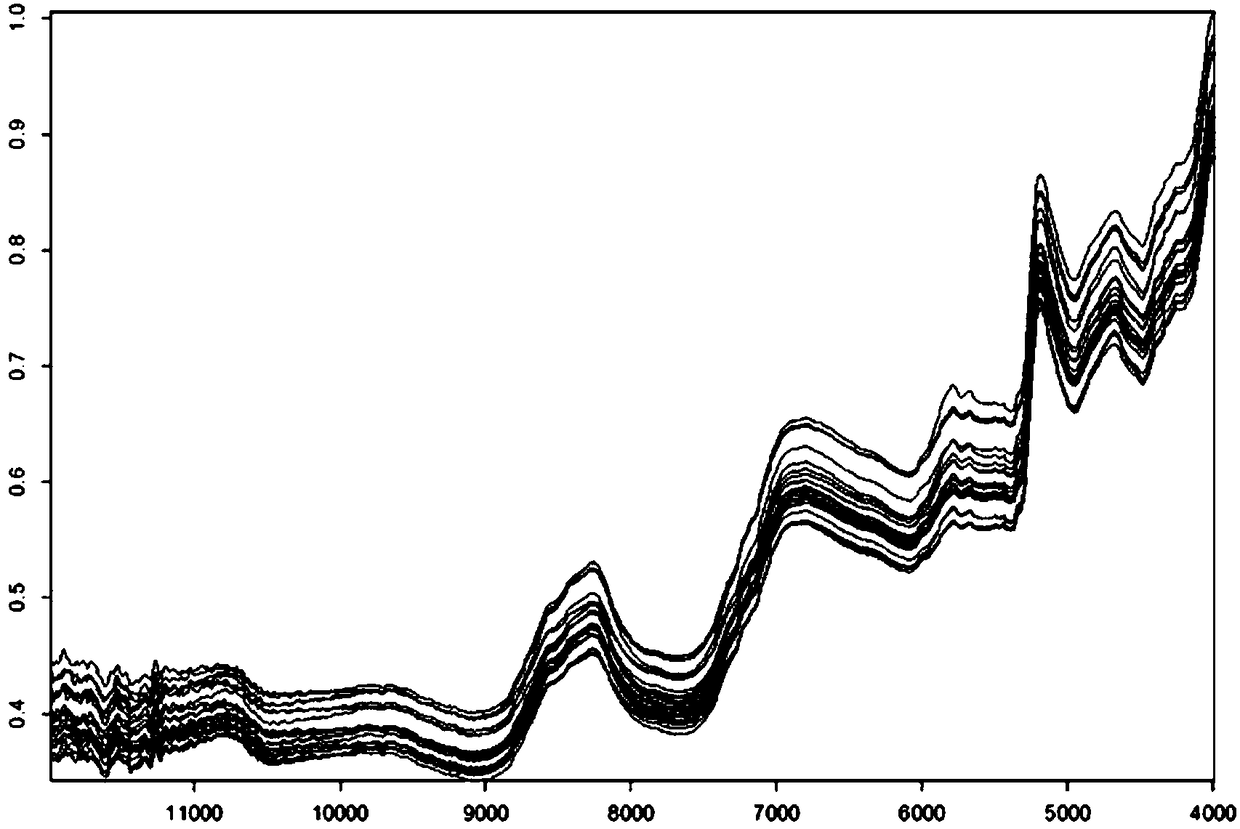Near-infrared spectroscopy model for detecting content of erucic acid in peanut seeds and application
A near-infrared spectroscopy and peanut technology, applied in the field of near-infrared spectroscopy models, can solve the problems of unfavorable development of peanut low erucic acid breeding, no reports, and high cost, and achieve simple and easy detection, reliable results, and high accuracy. Effect
- Summary
- Abstract
- Description
- Claims
- Application Information
AI Technical Summary
Problems solved by technology
Method used
Image
Examples
Embodiment
[0035] The following is an example of the MATRIX-I near-infrared instrument produced by Bruker, Germany, but the scope of application of this patent also includes similar products from other manufacturers.
[0036] 1. Materials and methods
[0037] 1.1 Materials
[0038] The test materials used to construct the erucic acid model were from 67 peanut varieties (lines) at home and abroad (Table 1).
[0039] Table 1 Peanut samples used to construct the near-infrared model of peanut erucic acid content
[0040]
[0041] 1.2 Method
[0042] 1.2.1 Spectrum acquisition
[0043] The spectral data used in the modeling were collected on a Matrix-I Fourier transform near-infrared spectrometer produced by German Bruker Spectroscopy Instruments. The range of scanning spectrum is 4000~12000cm -1 , the number of scans is 64 times, and the resolution is 8cm -1 . The samples were tested after 30 minutes of preheating. The peanut seeds used to collect the spectrum are sun-dried sample...
PUM
 Login to View More
Login to View More Abstract
Description
Claims
Application Information
 Login to View More
Login to View More - R&D
- Intellectual Property
- Life Sciences
- Materials
- Tech Scout
- Unparalleled Data Quality
- Higher Quality Content
- 60% Fewer Hallucinations
Browse by: Latest US Patents, China's latest patents, Technical Efficacy Thesaurus, Application Domain, Technology Topic, Popular Technical Reports.
© 2025 PatSnap. All rights reserved.Legal|Privacy policy|Modern Slavery Act Transparency Statement|Sitemap|About US| Contact US: help@patsnap.com



